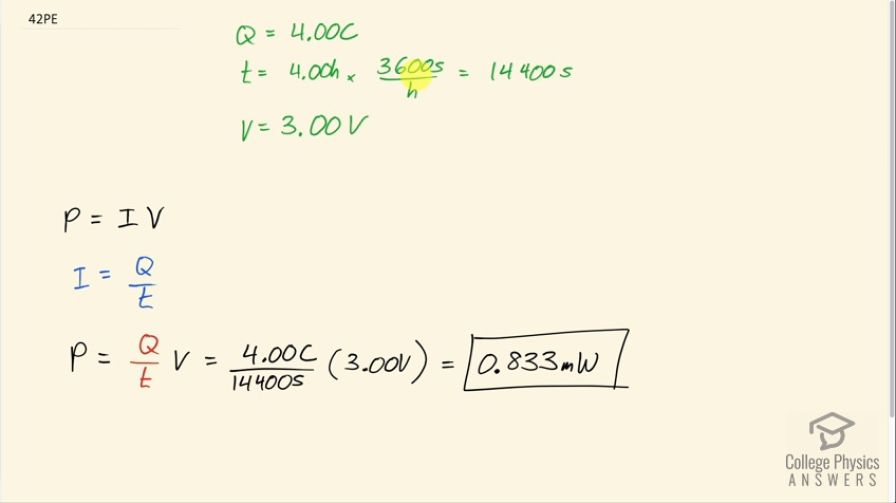Question
A charge of 4.00 C of charge passes through a pocket calculator’s solar cells in 4.00 h. What is the power output, given the calculator’s voltage output is 3.00 V? (See Figure 20.40.)
Final Answer
Solution video
OpenStax College Physics for AP® Courses, Chapter 20, Problem 42 (Problems & Exercises)

vote with a rating of
votes with an average rating of
.
Calculator Screenshots
Video Transcript
This is College Physics Answers with Shaun Dychko. 4.00 coulombs of charge passes through a calculator's solar cells in 4.00 hours and we convert the hours into seconds at this stage of writing down the information that we know in order to avoid doing it while we are thinking about formulas and algebra and so on. So we multiply by 3600 seconds per hour here and this works out to 14400 seconds; we always want meters, kilograms and seconds in our units and so we do conversions at this stage where we write down information. The voltage we are told is 3.00 volts and the question is what is the power? So power is the product of current times voltage, the current we can find by dividing the amount of charge that flows by the time it takes for it to flow so the rate of charge flow in other words and substitute Q over t in place of I and so power then is Q over t times V. So that's 4.00 coulombs divided by 14400 seconds times 3.00 volts which is 0.833 milliwatts.
